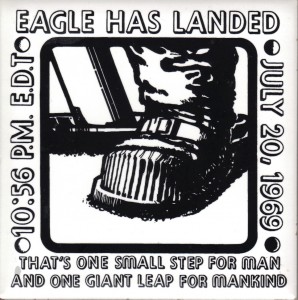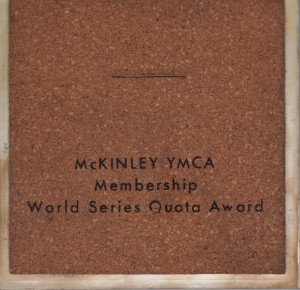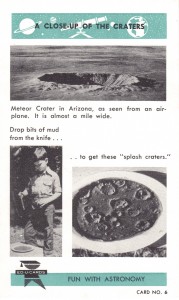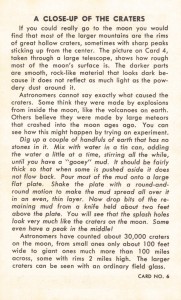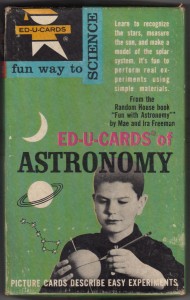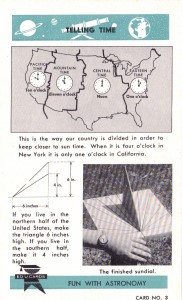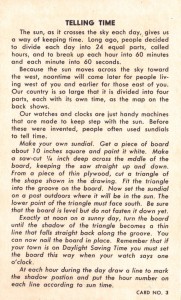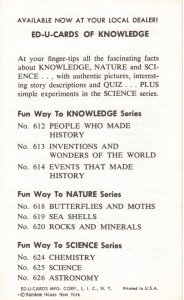Yesterday, when I was poking around in the Habitat for Humanity ReStore, my partner chased me down and handed me a stack of ceramic coasters. At first I thought she had found a necessary item for our house, since I’ve all but ruined our oak coffee table by letting sweat from my cold glass drip on it, but no. She found something much more interesting—a set of souvenir coasters commemorating the Apollo 11 lunar landing. The graphic is awesomely vintage, with heavy strokes characteristic of graphic design aesthetic of the late 1960s-early 1970s. The astronaut’s boot looks as if it should be accompanied by the “Keep on truckin’!” banner. The text separators depict (roughly) the four phases of the moon, and the text itself—heavily drop-shadowed—notes two significant events: the landing of the Apollo Lunar Module (LM), Eagle, and Neil Armstrong’s first test of the lunar surface with his foot.
The back of the coaster tells us that the set hasn’t traveled very far in the world. It was apparently a reward for a successful membership drive for the McKinley YMCA (now the Champaign County YMCA), and we picked it up just a few blocks away from the Y at the Champaign Restore. I like to think that the person who won the set thought they were too special to use, so she or he set them away in a safe place. Maybe they’ve been in that safe place for the last 43 years and they were donated to Habitat for Humanity during a massive cleaning-out project by the recipient’s offspring. Whoever let them go obviously didn’t value them too much, since we picked them up for two bucks, but you know what? They’re going back into a safe place because in this household, they’re too special to use.
